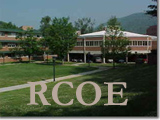|
Copyright
2006 Amanda Burleson, Reich
College of Education, Appalachian |
|
|
Cover Page |
This telefolio contains artifacts that are representative of all
of the courses, knowledge, and teaching strategies I gained while continuing
my education as a graduate student at Appalachian State University and the
application of learned content to my daily work with students, colleagues,
and parents. All listed artifacts are
aligned with the North Carolina DPI & NCATE Standards for a Master's
Degree in Questions? “There is no single mold for teaching. There is no single mold for anything. A school may try to create one and a state may try to mandate
one but the essence of teaching lies within your essential self. Imagine the essence of Christ and the use of the parable. Imagine the essence of Socrates and the use of the question. Imagine the essence of Buddha and the use of meditation. Teach with the essence within your essential self and the method
is there.” -Author Unknown “Children are like butterflies in the wind. Some can fly higher than others. But each one flies the best he can. There’s no need to compare one to the others. Each one is beautiful.” -Author
Unknown This quote is in reference to a “The first part of the Circle represents
the dawn and the first step to learning, which is to listen. The second part of the Circle stands for
morning, which is to observe. The
third part of the Circle is the afternoon and it reminds us to remember. The fourth part of the Circle represents
the sunset and the final step to learning, which is to share.” -Joseph Bruchac
|



